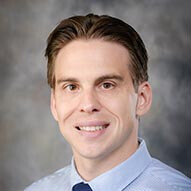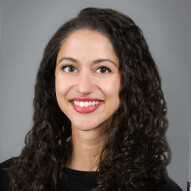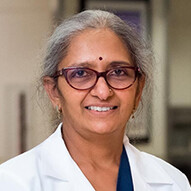Gait abnormalities in children
At Children's Health℠, our experts have decades of experience identifying and treating gait abnormalities in children. We offer the latest physical therapy and rehabilitation techniques, and multiple providers on our team have pediatric clinical specialist certifications. Our qualifications make us among the most experienced and highly trained team in the country.
We understand that gait abnormalities can be startling and alarming. We are here to help you and your child better understand what’s causing them and provide treatment to help your child enjoy a fuller, more active life.
What are gait abnormalities in children?
Gait abnormalities are unconventional walking patterns that many young children develop as they learn to walk. They are common and often resolve themselves, but some require medical care.
As your child grows and becomes mobile, it is important to keep some key milestones in mind:
6 months - Sitting up with support and rolling over on their own
9 months - Learning to crawl
9–12 months - Pulling themselves up (by grabbing onto furniture, etc.) to stand and walking with support
1 year–16 months - Starting to walk
2 years - Jumping in place and going up stairs (one at a time)
3 years - Going up stairs using both legs and standing on one foot
4 years - Going down stairs using both legs and hopping on one foot
Your child might reach some of these milestones earlier or later than these timelines. Gait abnormalities can make many of these movements awkward or difficult for the child. Talk to your child’s pediatrician if you are worried about your child’s physical development.
What are the different types of gait abnormalities in children?
The two most common gait abnormalities in children are in-toeing and out-toeing, which are usually not painful. In-toeing means your child’s feet are turned inward, and out-toeing means your child’s feet are turned outward. Both in-toeing and out-toeing can result from several common health conditions, most of which usually resolve themselves as your child grows. The many types of gait abnormalities vary in severity and have different causes.
Types include:
Tibial torsion - A child’s lower leg (tibia) turns inward (internal tibial torsion) or outward (external tibial torsion). Some children with tibial torsion might need to wear a night brace between 18 and 30 months of age. The condition usually it improves on its own before a child turns 4.
Femoral version - A child’s upper leg bone (femur) is turned inward (femoral anteversion) or outward (femoral retroversion). Femoral anteversion usually becomes noticeable when a child is 2 to 4 years old. Femoral retroversion is less common. It may delay a child’s walking.
Bowlegs - A child’s legs curve outward at the knees.
Knock knees - A child’s legs curve inward at the knees.
Flat feet - The arches in your child’s feet have not yet developed so the entire sole of their feet touches the ground. Arches usually develop throughout childhood, and most children have them by age 10.
Metatarsus adductus - A child’s feet bend inward from the middle of the foot to the toes. This is a common positional deformity and may resemble clubfoot.
Sudden limping - A minor injury, such as splinters, blisters or tired muscles, may cause your child to limp. Sometimes, limping can result from a more serious problem, such as a fracture or sprain. In rare cases, tumors can cause limping. Limping that does not improve as your child recovers from the injury or grows up might result from a developmental condition, such as leg length discrepancy, hip dysplasia or neuromuscular disorders.
Toe walking - A child with tight muscles or Achilles tendons may walk with their heels lifted off the floor. Toe walking is common, especially in children who are just learning to walk. Rarely, toe-walking can be the result of a neuromuscular disorder. It could also be a sign of hip dysplasia or leg length discrepancy.
What are the signs and symptoms of gait abnormalities in children?
Freezing while moving
Frequent falls
Difficulty with balance and coordination
Shuffling
Staggering (ataxia)
How are gait abnormalities in children diagnosed?
Doctors diagnose gait abnormalities by giving your child a physical exam and watching them walk, hop, run or balance on one foot. They will look at the structure of your child’s legs, ask whether your child experiences pain while walking and discuss any family history of walking problems that your child may have.
Your child’s care team may also do some imaging of your child’s legs to better understand what might be causing their gait abnormalities. These tests help rule out any issues with your child’s spinal cord or nervous system.
They include:
X-ray - Pictures of internal tissues, bones, tendons and muscles
Magnetic resonance imaging (MRI) - Detailed images of soft tissues and structures within your child’s body
Computerized tomography scan (CT or CAT scan) - Detailed images of the bones and joints
What causes gait abnormalities in children?
Gait abnormalities may result from:
Underuse - Many children who need long-term hospital care for an illness or who have a spinal injury might be bedridden for a long period of time. This inactivity can cause their muscles to become too tight or weak to move safely.
Brain injury - When a child has a stroke or a traumatic brain injury, their bodies may temporarily forget how to walk and move in a healthy way.
Neurological conditions including:
Tumors in the nervous system
A developmental phase
Many children will experience gait abnormalities as they learn to walk in early childhood. They often outgrow these gait abnormalities as they continue to learn to walk or move. Sometimes, they may need a little help to get there, but these problems are nothing to worry about.
How are gait abnormalities in children treated?
Most gait abnormalities need monitoring over several years, as your child grows and develops. Many gait abnormalities will disappear with time and do not require medical treatment.
However, if a gait abnormality results from an injury or health condition, or if it persists as your child grows up, our team will provide targeted treatment.
Treatments may include:
Surgery
Corrective shoes and/or leg braces
Casts
Most research suggests that children with gait abnormalities due to a medical condition need a lot of targeted physical therapy. At Children’s Health, we’ll use top-of-the-line equipment to help your child become stronger and more mobile.
Gait abnormalities in children doctors and providers
 Michael Dowling, MDPediatric Neurologist
Michael Dowling, MDPediatric Neurologist Eric Remster, MDPediatric Neurologist
Eric Remster, MDPediatric Neurologist Lauren Sanchez, MDPediatric Neurologist
Lauren Sanchez, MDPediatric Neurologist Rajashree Srinivasan, MDPhysical Medicine and Rehabilitation Doctor
Rajashree Srinivasan, MDPhysical Medicine and Rehabilitation Doctor Cynthia Wang, MDPediatric Neurologist
Cynthia Wang, MDPediatric Neurologist